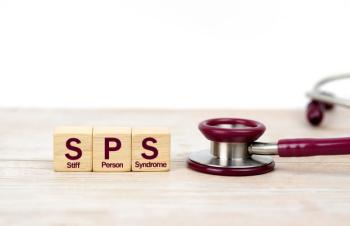
- MHE January 2020
- Volume 30
- Issue 1
4 Top Successful Social Determinants of Health Programs
Here are four programs making a difference.
There’s a reason that healthcare systems address social determinants of health (SDoH): Studies show that when patients have stable housing, nutritious food, and transportation to medical visits, their health improves and their use of the most expensive medical services, like visits to the emergency department (ED), decreases. SDoH are conditions that affect a person’s health, like where they live, their educational and socioeconomic status, and their social support networks. Healthcare systems around the country address various aspects of SDoH, whether in new, small pilot programs, or larger well-established ones.
Some of the most innovative programs are run through Medicaid plans. The Kaiser Family Foundation conducted a 2017 national survey of Medicaid managed care organizations, showing that more than
Here are four programs making a difference.
- Healthy Together
Until April 2018, when
Related:
“If we, as providers, struggle with that, you can imagine the burdens that our community members have accessing them,” says Michele Horan, the director of operations for the Healthy Together platform. Instead of providers calling, faxing, and emailing community-based organizations (CBOs) for referrals, they can now go through a web-based platform tying them all together. Healthy Together is the Alliance’s branded name for the
“All the partners can communicate with one another (in Healthy Together) to ensure that someone doesn’t fall through the cracks,” says Keshana Owens-Cody, Alliance’s senior director of partner success.
Social service providers enroll in the network for free. Healthy Together currently has 20 service categories, 132 subcategories, and 75 enrolled organizations with 275 programs included. It actively recruits organizations to join the network and help onboard them. Given the relatively short time frame it’s been live, Healthy Together has not yet parsed the data to look at outcomes, but anecdotally it is thrilled with its connectivity, transparency, and ease of use.
- Wellness on Wheels
Since starting its Wellness on Wheels mobile primary care clinic three afternoons a week in January 2017, OhioHealth decreased inappropriate ED visits by 50%. The healthcare system started its
The Hilltop clinic is an expansion of the OhioHealth women’s health clinic, with a 26-year history. The 54-foot mobile unit has two exam rooms, housing clinicians and a social worker who screens for SDoH and make referrals in both settings, says Shannon Ginther, OhioHealth senior director of community health partnerships.
The programs are partly supported by outside philanthropic funding, and partly by OhioHealth itself. The clinic accepts insurance, if the patient has it.
- Asthma to Primary Care
The Sinai Urban Health Institute (SUHI), located in Chicago, started multiple SDOH programs over the years, based on where it sees community needs. That includes programs focused on diseases like diabetes, breast health, and asthma. They reduced asthma-related ED visits
SUHI recently did two large door-to-door surveys in different Chicago communities to pinpoint current needs and analyzed Chicago Department of Public Health data as well. As a result, the latest program is also using community health workers, often starting in the ED. SUHI trains them in core skills for motivational interviewing, home visits, and cultural competence.
“Utilizing healthcare workers can be a cost-effective way to reduce utilization,” says Stacy Ignoffo, SUHI’s director of community health innovations. “Our own research shows if we do some interventions, they can decrease healthcare utilization in expensive hospital and emergency room usage,” while increasing the less expensive outpatient care.
Like the OhioHealth Hilltop program, SUHI community health workers identify patients in the ED without primary care physicians, screening them for SDoH. After identifying needs, they provide referrals and follow up with patients in the home setting if possible, to ensure they’re connecting with the agencies, as well as with primary care providers. “We’re finding that primary care and food insecurity are up there in needs, as well as housing,” she says.
- Cultivating Health for Success
Housing is an important issue in Pittsburgh as well, and Medicaid plan
Using a team and partnership model, UPMC community health workers, clinicians, and its partner, the local HUD vendor Community Human Services, work together to ensure the patients in the program get needed housing, medical care, transportation, food, and any other needs met. “The vast majority of individuals we serve have a significant number of chronic conditions and co-occurring behavioral health diagnoses,” LaValle says.
UPMC found it took 10 months of consecutive stable housing to get to the changes it wanted to see: better primary care trends and less ED utilization. “We now know that if we can get someone housed for 10 months, that will change their trajectory,” he says. With the program, those enrolled saved about $6,000 per member per year on expenses, which UPMC put back into the program.
It is starting to expand the program to those who don’t meet the HUD definition of homelessness but qualify for Section 8 housing vouchers. This population also has high needs, is not getting recommended medical screenings, and goes to the ED frequently. UPMC is using the same agency and model for partnership and case management, with some funding differences. One change is incentivizing providers with shared savings in a pay-for-performance model.
While 72% of hospitals are not investing in SDoH programs, according to a 2017
Articles in this issue
almost 6 years ago
Top Issues Facing Pharma in 2020almost 6 years ago
Defining Success in Healthcarealmost 6 years ago
Data Analytics Improving Care Coordination Programsalmost 6 years ago
3 Technologies Providing Personalized Healthcarealmost 6 years ago
The Benefits of Pharmacogenetic Testingalmost 6 years ago
Investing in the Futurealmost 6 years ago
Top 6 Challenges Healthcare Executives Will Face in 2020almost 6 years ago
Top Pharmacy Regulations for 2020: What Pharmacists Should Knowalmost 6 years ago
The Most Valuable Pipeline Drugs For 2020about 6 years ago
4 Ways to Adapt to New Oncology Value-Based ModelsNewsletter
Get the latest industry news, event updates, and more from Managed healthcare Executive.


















































